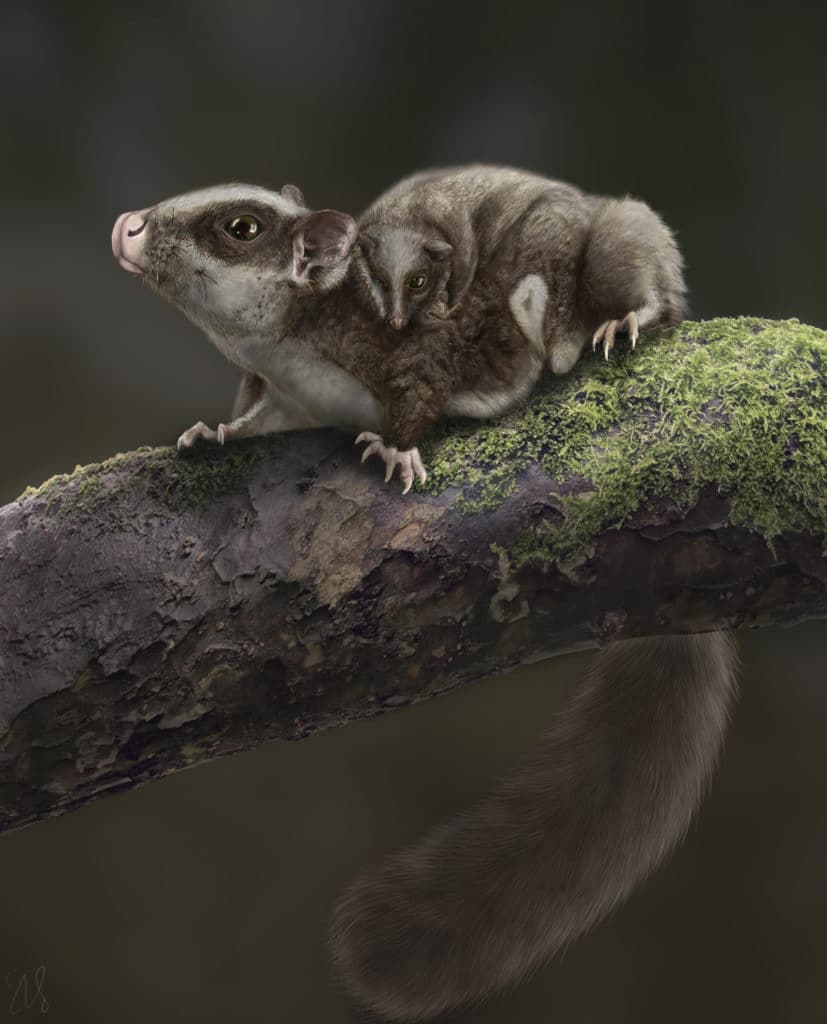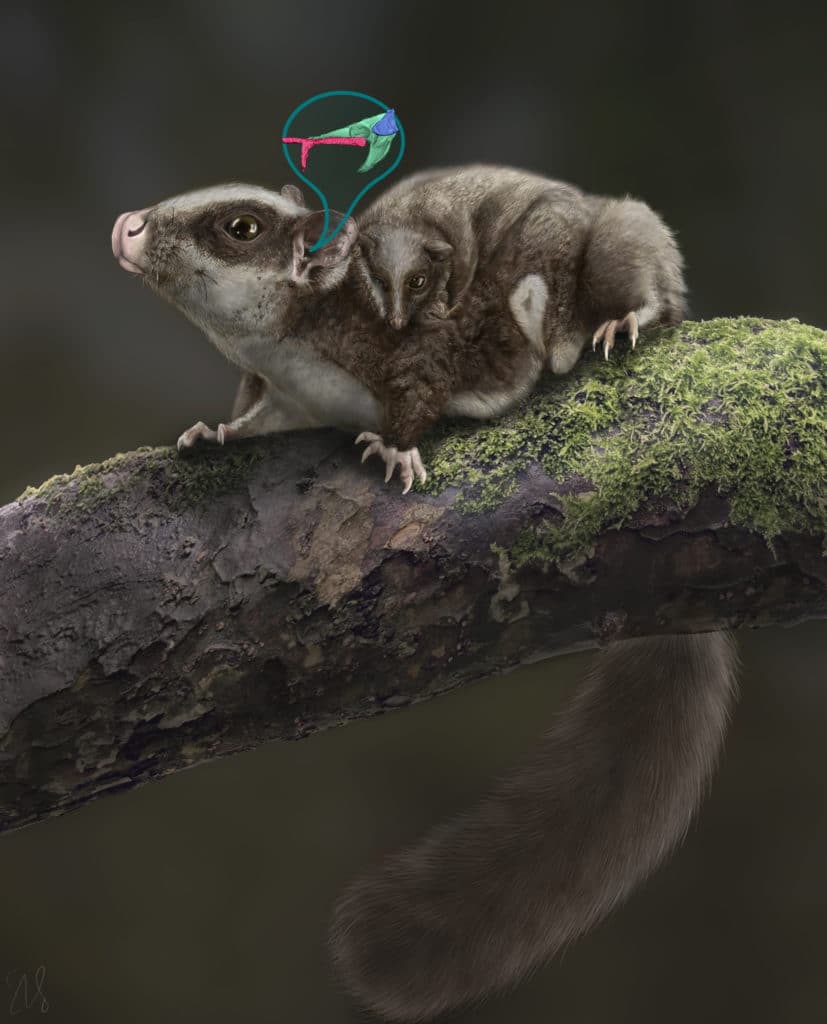
[Pittsburgh, Pennsylvania, January 27, 2021] — In a study published today in the prestigious scientific journal Nature, researchers from Carnegie Museum of Natural History (CMNH), Indiana University of Pennsylvania (IUP), and the Inner Mongolia Museum of Natural History in China announce a surprising clue in the puzzling evolution of the mammalian middle ear. Despite increased access to fossils preserving the auditory apparatus, the evolution of the middle ear bones (ossicles) of living mammals has proved elusive to scientists. John Wible, curator of mammals at CMNH, Sarah Shelley, a postdoctoral researcher at CMNH, and Shundong Bi, a professor at IUP and research associate at CMNH, describe a new fossil specimen of a haramiyidan (a now-extinct mammal group that thrived during the Mesozoic Era, or “Age of Dinosaurs”) from China’s Middle Jurassic epoch that represents an evolutionary “stepping stone” between Mesozoic fossils and living mammals. This animal, Vilevolodon diplomylos, was a gliding mammal resembling a southern flying squirrel in size and external appearance.
Scientists know that the ossicles in extant mammals’ close non-mammal relatives were attached to the lower jaw and functioned with it, serving in both chewing and hearing. In many mammal lineages, the ossicles eventually detached from the lower jaw and came to serve only auditory functions. The details of this transition have been mysterious. Wible, Shelley, and Bi analyzed computed tomographic (CT) images of the new haramiyidan’s well-preserved malleus and incus, two of the three middle ear ossicles, and found them remarkably similar to those of modern monotremes (egg-laying mammals). Since haramiyidans and monotremes are not thought to be closely related, this resemblance demonstrates a surprising instance of convergent evolution.
“Although separated by 160 million years of geologic time, it is remarkable how similar these bones are in Vilevolodon and the living monotremes, the platypus and echidna,” notes Wible. “The preservation of these ossicles in the fossil is amazing; the incus is just a little over a millimeter across!”

The malleus and incus of monotremes have long been considered to be unique adaptations as they are wholly unlike these bones in the remaining living mammals, marsupials and placentals. Reanalysis of Mesozoic fossils with preserved middle ear ossicles led the researchers to conclude that this type of malleus and incus represent an evolutionary stage between fossils with ossicles attached to and functioning with the lower jaw and those where the ossicles are detached from the lower jaw and exclusively function for hearing.
The researchers hope the discovery advances the understanding of how mammals, including humans, developed their unique sense of hearing.
